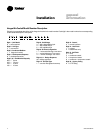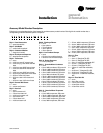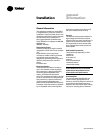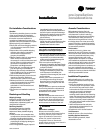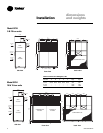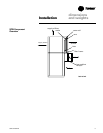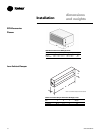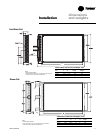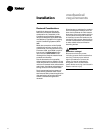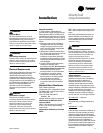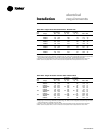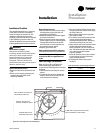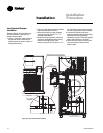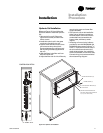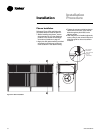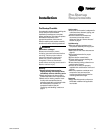
12 SXIH-SVX01B-EN
Installation
mechanical
requirements
Ductwork Considerations
Install all air ducts according to the
National Fire Protection Association
standards for the “Installation of Air
Conditioning and Ventilation Systems
other than Residence Type (NFPA 90A)
and Residence Type Warm Air Heating
and Air Conditioning Systems (NFPA
90B).
Make duct connections with a flexible
material such as heavy canvas. If a fire
hazard exists, Trane recommends using
Flexweave 1000, type FW30 or equiva-
lent canvas. Use three inches for the
return duct and three inches for the
discharge duct. Keep the material loose
to absorb unit vibration.
Run the ductwork as far as possible
without changing size or direction. Do not
make abrupt turns or transitions near the
unit due to increased noise and excessive
static losses. Use elbows with splitters or
turning vanes to minimize static losses.
Poorly constructed turning vanes may
cause airflow generated noise. Check
total external static pressures against fan
characteristics to be sure the required
airflow is available throughout the
ductwork.
Direct louvers up and down for condens-
ers air discharge and intake so as to not
short circuit condenser air. Pitch outdoor
ducts away from unit to protect unit from
rain and snow entering with condenser
air. Auxiliary louvers and hoods may be
required for this purpose. Attach ducts to
unit with canvas section duct connectors
or other suitable noise and vibration
absorbing devices.
WARNING
Hazardous voltage!
Disconnect all electric power,
including remote disconnects before
servicing. Follow proper lockout/
tagout procedures to ensure the
power can not be inadvertently
energized. Failure to disconnect
power before servicing could result in
death or serious injury.



